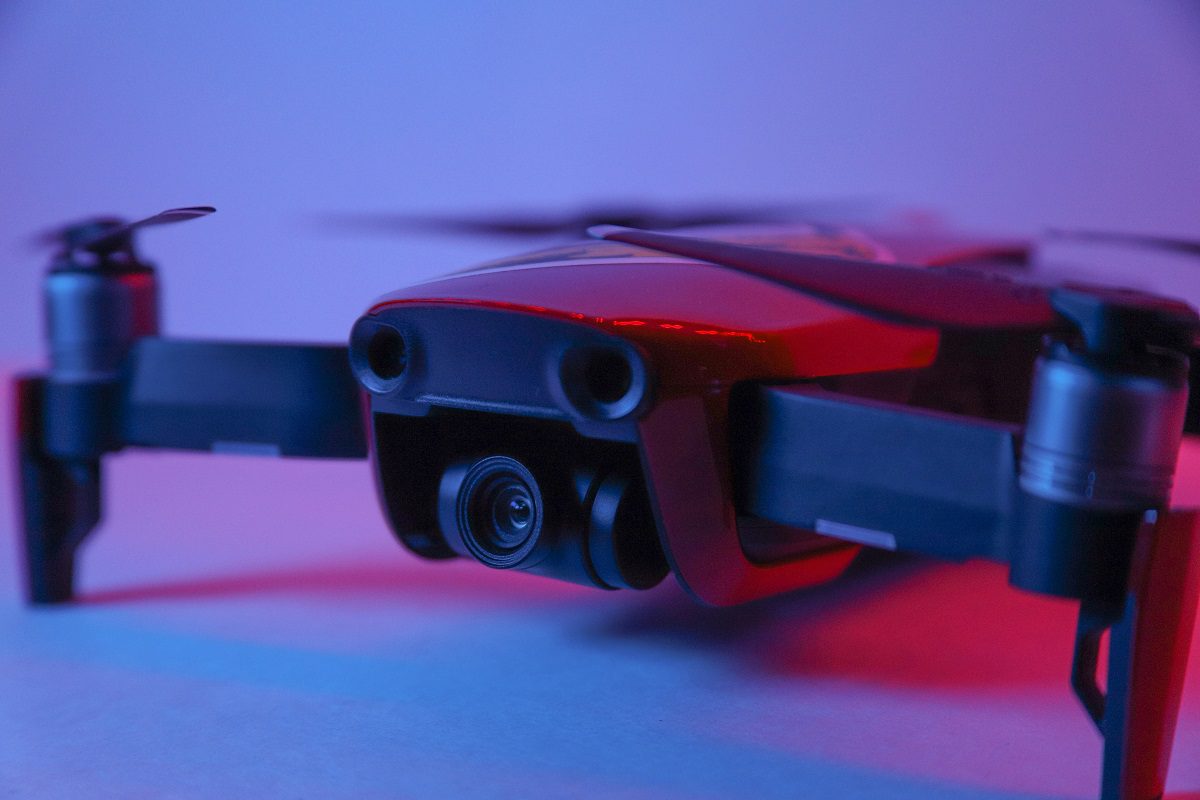
DJI faces possible ban concerns as the U.S. government navigates national security and economic priorities, prompting executive orders to bolster the domestic drone industry. While the Chinese drone giant DJI, which commands a significant share of the global market, has not been outright banned, recent policies signal a shift toward stricter oversight and investment in American drone manufacturers. This article explores the implications of these executive orders, the role of DJI in the U.S. market, and what it means for consumers, businesses, and the broader drone ecosystem.
Key Takeaways
The U.S. government is prioritizing domestic drone manufacturing through executive orders.
DJI, a leading Chinese drone maker, faces increased scrutiny but no immediate ban.
National security concerns drive the push for stricter regulations on Chinese drones.
The domestic drone industry, including companies like Skydio, stands to benefit.
DJI’s advanced privacy and security features are under review to address concerns.
Background on DJI and Its Market Dominance
Contents
- 1 The Rise of DJI in the Drone Industry
- 2 Why DJI Faces Scrutiny
- 3 Strengthening the Domestic Drone Industry
- 4 No Outright Ban—Yet
- 5 Impact on DJI’s Operations
- 6 Rise of U.S. Drone Manufacturers
- 7 Challenges for American Competitors
- 8 Security Concerns in Focus
- 9 Balancing Security and Innovation
- 10 What a Ban Could Mean for Consumers
- 11 Businesses and Public Safety
- 12 DJI’s Proactive Stance
- 13 The Path Forward
- 14 1. Why does DJI face a possible ban in the U.S.?
- 15 2. What are the U.S. executive orders about drones?
- 16 3. Has DJI been banned in the U.S.?
- 17 4. How does DJI address security concerns?
- 18 5. What is the domestic drone industry’s role in this?
- 19 6. How would a DJI ban affect consumers?
- 20 7. Are there U.S. alternatives to DJI drones?
- 21 8. What industries rely on DJI drones?
- 22 9. What happens if DJI passes the security review?
- 23 10. When will the security review be completed?
The Rise of DJI in the Drone Industry
DJI, headquartered in Shenzhen, China, has become synonymous with consumer and commercial drones. Holding an estimated 70-80% of the U.S. hobby drone market and over 80% of the first responder market, DJI’s products like the DJI Mini 4 Pro and Mavic series are celebrated for their advanced technology, affordability, and reliability. From aerial photography to industrial inspections, DJI drones are used by hobbyists, law enforcement, and businesses alike, making them a staple in various sectors.
Why DJI Faces Scrutiny
The U.S. government’s concerns stem from national security risks associated with Chinese-made drones. Fears that DJI drones could transmit sensitive data to unauthorized parties, including the Chinese government, have fueled debates. Despite DJI’s insistence that it has never received such requests and its implementation of Local Data Mode—a feature that disconnects drones from the internet—skepticism persists. The 2025 National Defense Authorization Act (NDAA) mandates a security review of DJI and competitor Autel Robotics, with an automatic ban looming if no evaluation is completed by December 2025.
U.S. Executive Orders and Their Implications
Strengthening the Domestic Drone Industry
The Trump administration is finalizing executive orders aimed at reshaping the U.S. drone landscape. These orders focus on two key objectives: enhancing national security and supporting American drone manufacturers. By directing the intelligence community to accelerate reviews of Chinese drone makers, the government seeks to address potential risks while fostering growth in companies like Skydio, a Silicon Valley-based firm. The orders also mandate federal investment in the domestic drone industry, signaling a long-term commitment to reducing reliance on foreign technology.
No Outright Ban—Yet
Contrary to some headlines, the executive orders stop short of an immediate ban on DJI products. Instead, they emphasize a thorough national security review, which DJI has publicly welcomed. The company argues that its privacy controls and security features are robust, and a fair evaluation could clear its name. If the review finds no significant risks, DJI could continue selling in the U.S. market, albeit under stricter regulations. However, failure to complete the review by the NDAA’s deadline could trigger an automatic ban, a scenario DJI is keen to avoid.
Impact on DJI’s Operations
DJI’s decision to skip the U.S. release of its latest flagship drone model reflects the uncertainty surrounding these policies. Citing tariffs and security scrutiny, the company is adapting to “local conditions” in the U.S. market. This move could limit consumer access to cutting-edge drone technology while giving domestic competitors a chance to capture market share.
The Domestic Drone Industry: Opportunities and Challenges
Rise of U.S. Drone Manufacturers
The push to bolster the domestic drone industry has spotlighted companies like Skydio, which specializes in autonomous drones for both consumer and industrial applications. While Skydio’s sales lag behind DJI’s, federal investment could help close the gap. Other U.S. manufacturers are also eyeing opportunities, particularly in military and public safety sectors, where Chinese drones have been restricted since the Department of Defense’s 2018 ban.
Challenges for American Competitors
Despite the potential for growth, U.S. drone makers face significant hurdles. Chinese drones, particularly DJI’s, are known for their affordability and technological superiority, making it difficult for domestic firms to compete on price. Additionally, the U.S. lacks the scale of China’s consumer drone industry, which benefits from advanced manufacturing and supply chain efficiencies. Scaling up production while maintaining quality will be critical for American companies.
National Security vs. Innovation
Security Concerns in Focus
The debate over Chinese drones hinges on national security. Critics, including some U.S. lawmakers, argue that DJI’s dominance poses risks, especially when drones are used near military bases or critical infrastructure. The removal of geofencing features, which restrict drones from flying in sensitive areas, has heightened concerns. However, DJI maintains that its drones are secure and that no evidence supports claims of data misuse.
Balancing Security and Innovation
A blanket ban on DJI could stifle innovation and limit access to high-quality drones for consumers and industries like law enforcement, agriculture, and filmmaking. For example, DJI drones are widely used for police work, mountain rescues, and flood assessments. A ban could disrupt these operations, as no U.S. manufacturer currently matches DJI’s market presence or product range. The government’s challenge is to address security concerns without undermining the benefits of drone technology.
Consumer and Industry Impacts
What a Ban Could Mean for Consumers
For hobbyists and professionals, a DJI ban could mean higher prices and fewer options. The DJI Mini 4 Pro, a favorite for its compact size and 34-minute flight time, has no direct U.S. equivalent in terms of cost and performance. Consumers may face delays in accessing new models, and existing DJI fleets could lose functionality if FCC authorizations are revoked.
Businesses and Public Safety
Industries relying on DJI drones, from filmmaking to infrastructure inspection, could face disruptions. Companies like National Grid in the UK, which use DJI drones for thermal imaging, highlight their versatility. In the U.S., first responders and researchers depend on DJI’s reliability, and a ban could force a costly transition to less proven alternatives.
DJI’s Response and Future Outlook
DJI’s Proactive Stance
DJI has taken a proactive approach, welcoming the security review and emphasizing its commitment to privacy. Features like Local Data Mode and third-party software compatibility demonstrate its efforts to address concerns. The company also advocates for policies based on technological merit rather than country of origin, a stance that resonates with some industry observers.
The Path Forward
The outcome of the national security review will be pivotal. If DJI passes, it could solidify its position in the U.S. market. If not, the domestic drone industry could see a surge in demand, provided manufacturers can scale up. The executive orders also signal broader regulatory changes, such as updated rules on where commercial drones can fly, which could reshape the industry.
Summary
The U.S. government’s executive orders mark a turning point for the drone industry, with DJI facing possible ban scenarios due to national security concerns. While no outright ban has been imposed, the focus on strengthening domestic manufacturers like Skydio and accelerating security reviews reflects a strategic shift. DJI’s market dominance, driven by its affordable and innovative drones, is under threat, but the company remains optimistic about clearing its name. For consumers and businesses, the outcome will determine access to technology and the pace of innovation in the U.S. drone market. As the December 2025 deadline approaches, the industry awaits clarity on DJI’s future and the rise of American competitors.
FAQs
1. Why does DJI face a possible ban in the U.S.?
DJI faces scrutiny due to national security concerns, with fears that its drones could transmit sensitive data to unauthorized parties, including the Chinese government.
2. What are the U.S. executive orders about drones?
The orders aim to strengthen the domestic drone industry, accelerate security reviews of Chinese manufacturers like DJI, and invest in U.S. companies.
3. Has DJI been banned in the U.S.?
No outright ban has been imposed, but a security review is mandated by the 2025 NDAA, with an automatic ban possible by December 2025 if no review is completed.
4. How does DJI address security concerns?
DJI offers Local Data Mode, which disconnects drones from the internet, and allows users to manage data and use third-party software to enhance privacy.
5. What is the domestic drone industry’s role in this?
The U.S. is investing in companies like Skydio to reduce reliance on Chinese drones, aiming to boost domestic manufacturing and innovation.
6. How would a DJI ban affect consumers?
A ban could limit access to affordable, high-quality drones, increase prices, and disrupt existing fleets if FCC authorizations are revoked.
7. Are there U.S. alternatives to DJI drones?
Yes, companies like Skydio offer drones, but they currently lag behind DJI in market share, affordability, and product range.
8. What industries rely on DJI drones?
DJI drones are used in filmmaking, agriculture, law enforcement, search and rescue, and infrastructure inspection, among others.
9. What happens if DJI passes the security review?
If DJI passes, it could continue selling in the U.S. under stricter regulations, maintaining its market presence.
10. When will the security review be completed?
The review is mandated by the 2025 NDAA, with a deadline of December 2025. Failure to complete it could trigger an automatic ban.



